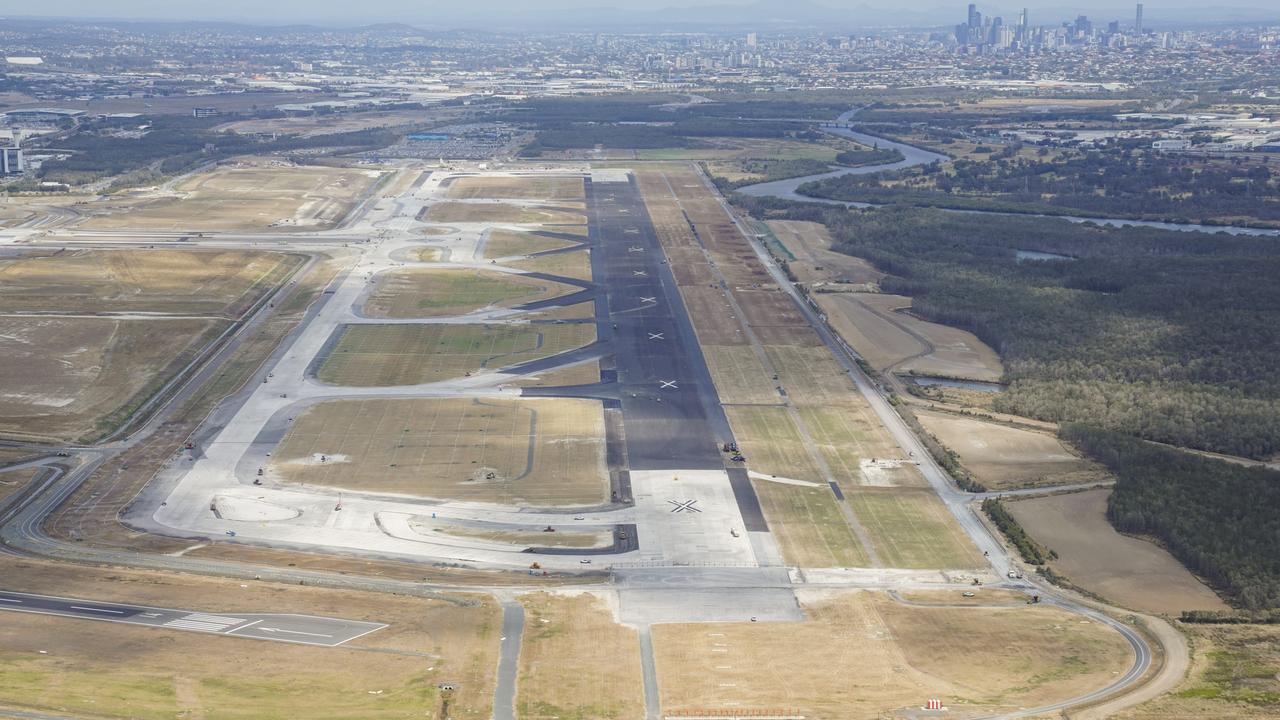Future SEQ: Brisbane has become the 200-kilometre-long metropolis I predicted
FIFTEEN years ago Brisbane was predicted to become a grim 200-kilometre-long sprawl of roads, houses and industry. This, sadly, is the “I told you so” moment for the man behind the prediction.
Future QLD
Don't miss out on the headlines from Future QLD. Followed categories will be added to My News.
IN 2003 I argued, in a series of articles for the Courier-Mail, that southeast Queensland was well on the way to becoming a 200-kilometre city, where the Sunshine Coast, Brisbane and the Gold Coast would simply merge into each other.
Unchecked development followed the dominant road systems. Only 17 per cent of this vast urban area could be classified as green space, compared with 43 per cent of an equivalent area in Sydney, where huge National Parks prevented it joining Newcastle and Wollongong.
Letters to the Editor, October 12, 2018
Future SEQ: Southeast’s most liveable suburbs
Future SEQ: What south east Queensland will look like in 2043
Regrettably, the 200-kilometre city has happened. No new national parks have been created, to give any sense of separation between these three cities, now one giant metropolis. Billions of dollars are spent on widening the M1 to the south and the Bruce Highway to the north. Placating traffic never works as a strategy for promoting sensible urban growth. Even Los Angeles has turned to public transport, creating a new light rail link from Santa Monica to the downtown.
If you cannot get on to the Bruce Highway or the Pacific Motorway before 1pm on a Friday, your travel time will double, even if there are no accidents. The traffic load is compounded by growing congestion on the Gold and Sunshine Coasts, because most of their residents use part of the highway system simply to move within their own region, now more clogged with traffic than many parts of Brisbane.
New public transport investment has been modest. The Brisbane Busway system now carries more people than the suburban trains, and when it hangs off the freeways, with bus rights of way, it is quicker than driving in the morning and evening peak. The new tram link between Southport and Helensvale helps us forget the stupid decision, taken in the early 1960s, to abandon the railway line to Southport and Tweed Heads.
What a tragedy that we are still going to have to wait years for rail access to Caloundra, Maroochydore and the Gold Coast airport.

Public transport investment still pales in comparison to the funds spent on the public road system and tollways. Cross river rail is a welcome prospect, to increase capacity for morning and evening peaks.
The property industry loves to tell us that Brisbane is becoming trendier than Sydney and Melbourne. But why would Brisbane want to ape either of those cities, which themselves are now confronted by massive traffic problems, high house prices and rents, forcing many workers to live scores of kilometres from their workplaces.

What made southeast Queensland unique in the Australian setting was its sub-tropical architecture in the inner suburbs of Brisbane. That is now under threat as never before. Montague Road in West End has turned into a traffic sewer, where developer driven high-density apartments, all with at least one car space per unit, crowd each other out. If you bought in a few years back, you might still have had a view over West End streets of timber and tin cottages and gardens. Now you just look at the apartment block being built next door. Infill developments – oversized granny flats and the like – are robbing the inner suburbs of their gardens, while tiny subdivisions in the outer suburbs, allegedly to create cheaper first homebuyer opportunities, have wall-to-wall mini mansions and two car garages.
SEQ seems to have collectively forgotten about the great urban drought of 2006-7.
Tanks are no longer mandated for new houses, and apartment blocks not only do not collect much if any water, but have to be air-conditioned throughout. When climate change is producing hotter and hotter cities, we embrace an urban form that creates heat and demands more and more energy. Moreover, if dam levels fall, we revert to desalination, the most energy-intensive form of water creation known to humankind.
Why has it come to this? The simple answer is that the property industry now calls the tune on key urban decisions. Local governments, including the two largest, the BCC and the Gold Coast Council, see themselves as facilitators of urban growth.
Campbell Newman gutted the state government’s regional and green space-planning capacity and it has not recovered. The current Labor government, like all state governments, is preoccupied with job creation and economic growth, so is busy blessing new building projects and casino-led developments. Despite protests by community organisations we appear, collectively, to have given up on the idea that a city with a magnificent bay on a flood-prone river should retain its sub-tropical character. Instead, like Singapore, which has very little land, more and more of our ‘gardens’ will be in hotel, apartment, office block and shopping centre foyers.
While the property lobby likes to boast that the 200-kilometre city might one-day rival Sydney and Melbourne in population, will it be a more liveable city? The current answer is high-speed public transport, but such promises are easy to make and hard to deliver. Will new urban development be determined by those transport routes, or will it simply create new marketing opportunities? Developers makes money out of a new apartment blocks and suburban subdivisions and do not give a toss about how that might impact on the immediate neighbourhood, let alone the congested metropolis beyond.
Emeritus Professor Peter Spearritt is researching water futures for Brisbane and Sydney


